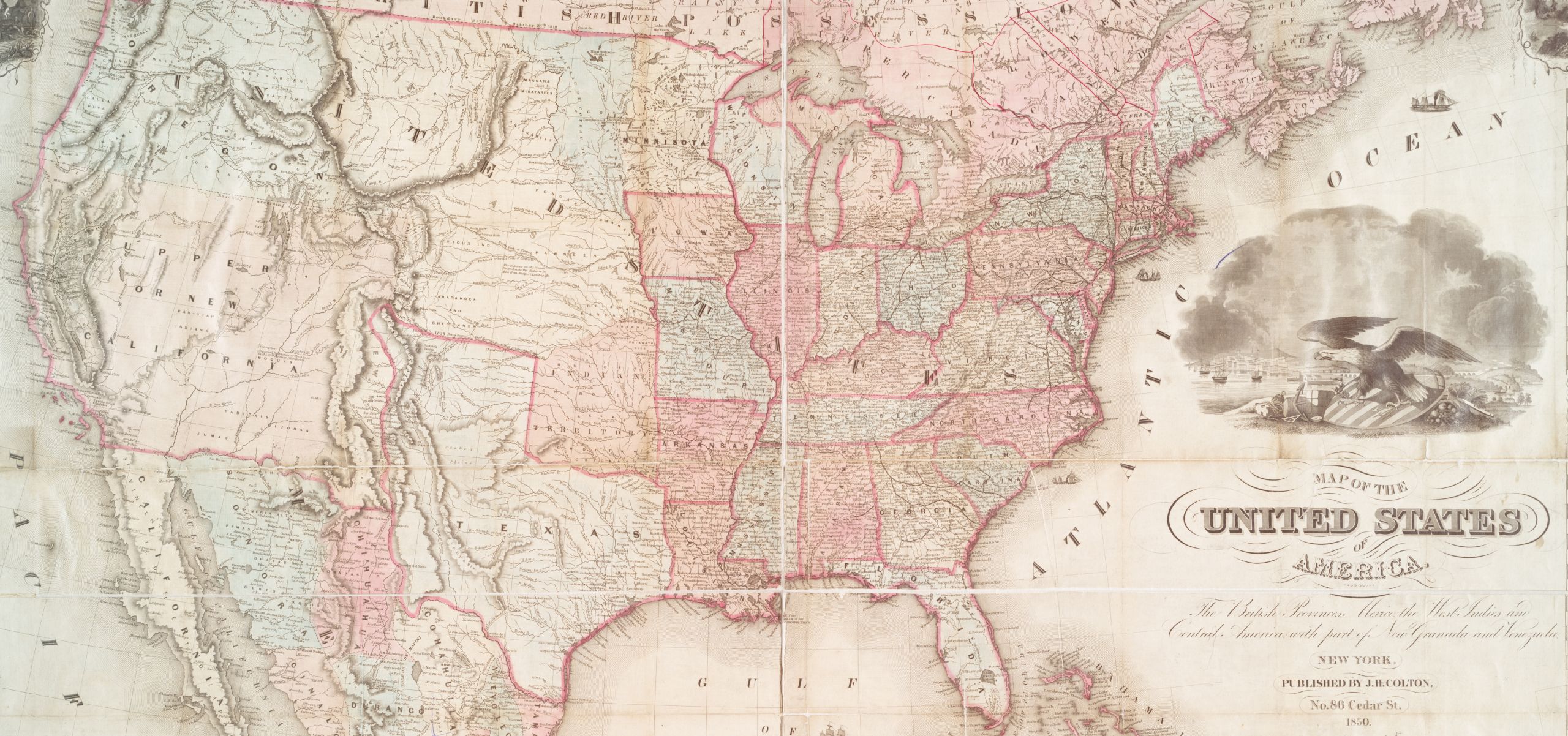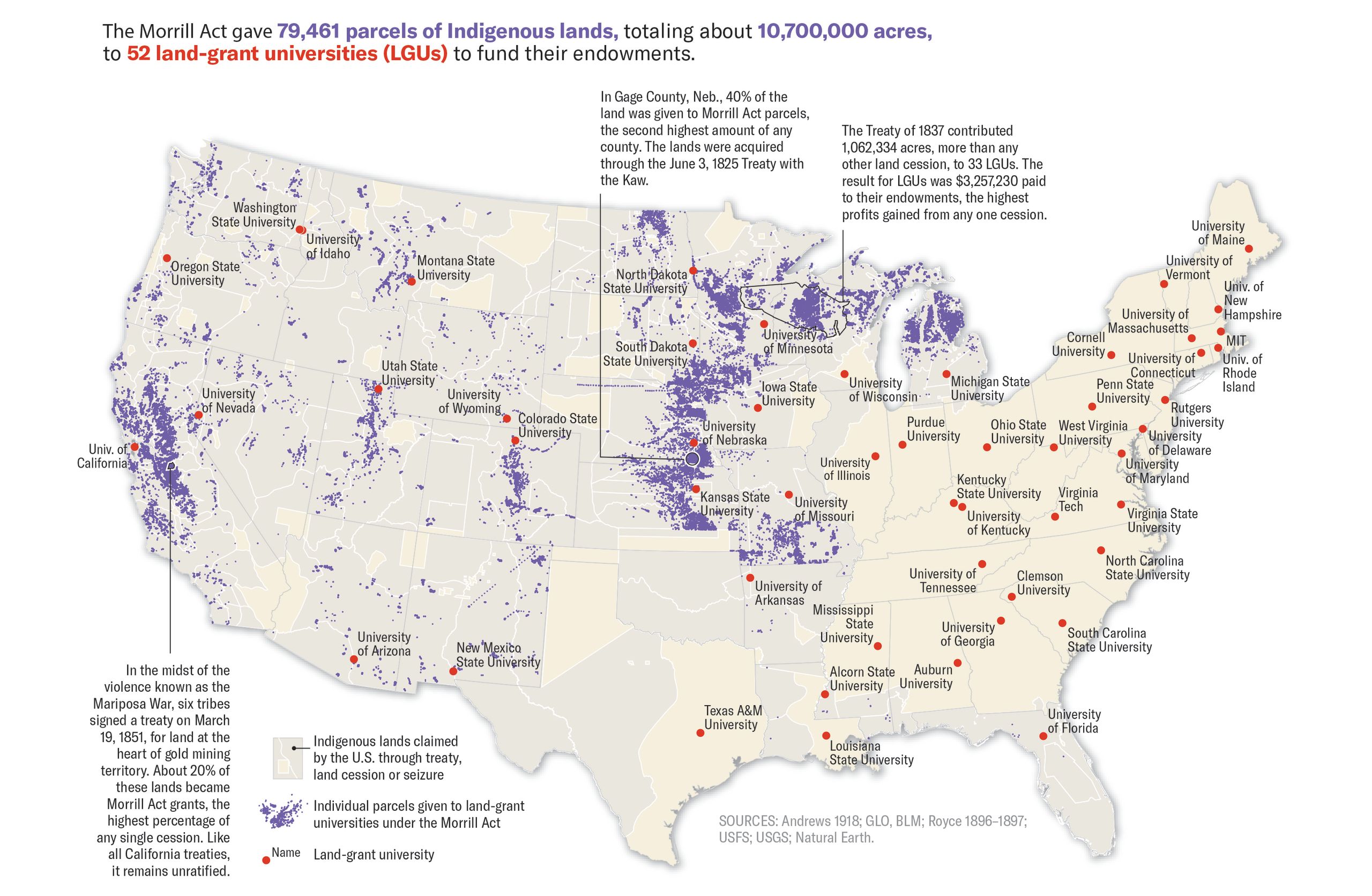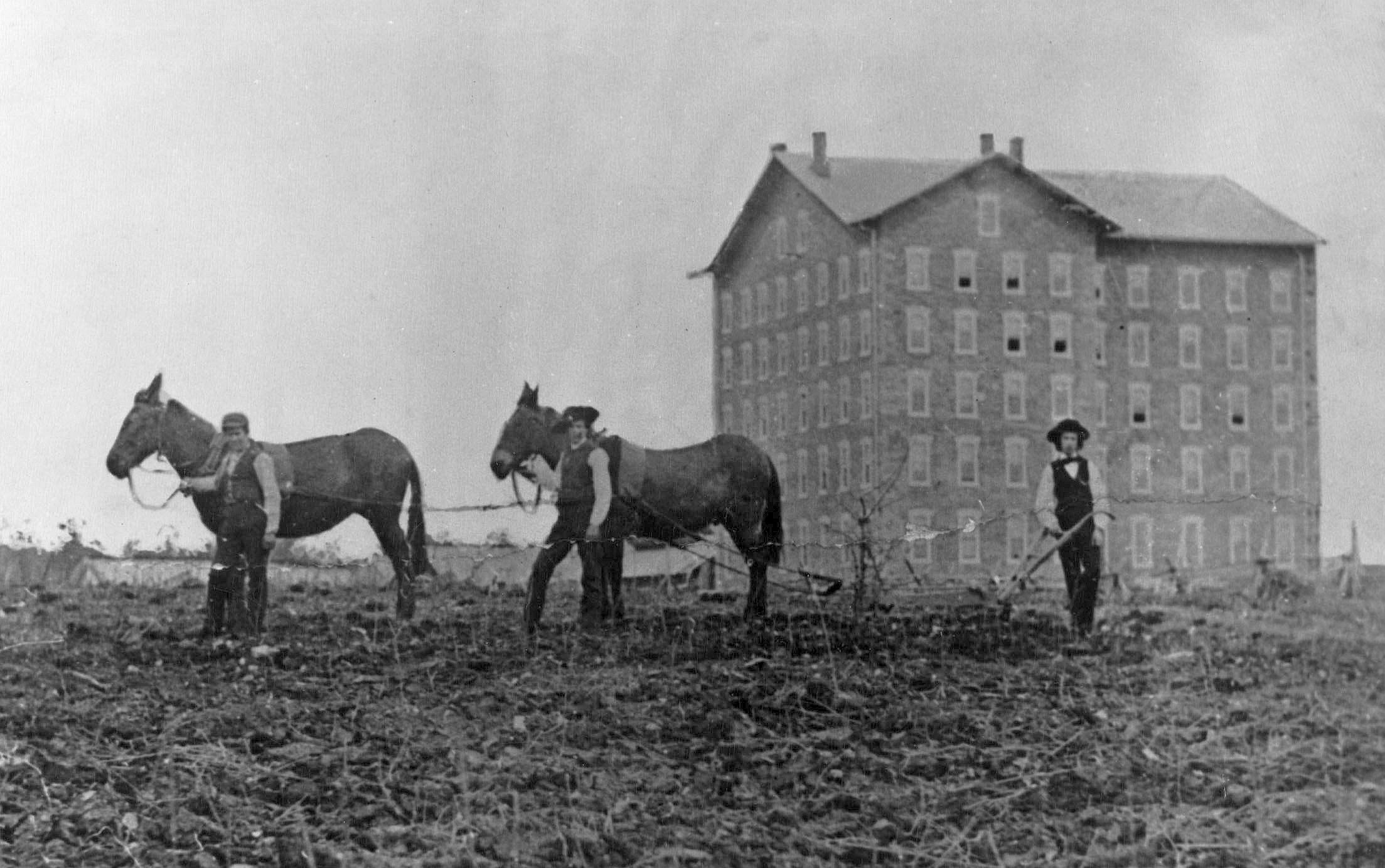The great university
land-grab
How 52 American universities built their fortunes using 11 million acres of Indian land – signed over amid violence, corruption and coercion

Yale, Cornell, MIT, Pennsylvania State, Texas A&M and the University of California are among the universities which continue to profit from the Morrill Act, legislation signed by President Lincoln in 1862, to turn land expropriated from tribal nations into seed money for new ‘land-grant universities’, a new study shows.
University of Cambridge historian Dr Robert Lee –working with journalists at High Country News – has located 80,000 parcels of land scattered across 24 mostly western states (over 99% of all Morrill Act acres), identified their Indigenous owners, and traced every dollar endowed with profits from dispossession in the late 19th and early 20th centuries.
The team has reconstructed a land area larger than Massachusetts and Connecticut combined which was taken through over 160 land cessions. The dispossessed included the Dakota, Navajo, Apache, Cheyenne, Arapaho and Ojibwe among nearly 250 other tribes, bands and communities.
On 6 April 2020, the project launched a free interactive website enabling the public to explore the fully mapped data for themselves.

Courtesy of Margaret Pearce / High Country News
Courtesy of Margaret Pearce / High Country News
The extent and complexity of the source material – drawn from land, legal records, and statistical reports from the 19th and 20th centuries – and the challenge of tracing millions of acres of Indigenous land made the project a mammoth undertaking which historians have previously shied away from.
“The Morrill Act is still praised for democratising education in the United States, but it did so using dirty money. The income that these funds produce today is a drop in the bucket for these modern mega universities but in the 19th century it was everything to them. Indigenous lands allowed these fledgling colleges to take off. It gave them critical seed money and then encouraged philanthropy, so it had a multiplier effect.”

Pennsylvania State University's first 'Old Main' in 1855 when the institution was founded as the Farmers' High School of Pennsylvania. The building was demolished in 1929. Image: Pennsylvania State University Archives
Pennsylvania State University's first 'Old Main' in 1855 when the institution was founded as the Farmers' High School of Pennsylvania. The building was demolished in 1929. Image: Pennsylvania State University Archives
The data shows how the Morrill Act turned Indigenous land into endowments for colleges which were often hundreds or thousands of miles away, busting the myth that these grants were only used to establish campuses.
The project also reveals two open secrets:
First that money made from the sale of land remains on university ledgers because the Act stipulated that it must be used in perpetuity; and second, at least 12 states are still in possession of unsold Morrill acres and associated mineral rights that continue to produce revenue for their designated universities.
In total, the US paid less than $400,000 to extinguish Indigenous title to land siphoned through the Morrill Act; for more than a quarter of the parcels it paid nothing at all. Altogether, the grants were worth about half a billion dollars, when adjusted for inflation.
“This represents a massive wealth transfer masquerading as a donation. The data challenges these universities to acknowledge the foundations of their success.”
Lee hopes that the project will encourage the universities to redirect income to support Native American students as South Dakota State University has already done with its Wokini Initiative. Indigenous people are heavily under-represented in university student populations, staff and faculty in the United States. They also hope to start a conversation about returning unsold lands.
The “Dakota War”
Iowa State University, as it would later become, was the first institution to profit from Indigenous land under the Morrill Act in 1862. Most of Iowa’s grant had been ceded by Dakota bands in Minnesota in the summer of 1851. Thirty-five land-grant universities – including the Massachusetts Institute of Technology, Cornell University, Pennsylvania State University, Ohio State University, and Texas A & M – later benefited from land inside the same cession, more than from any other land cession uncovered in the study.
A mechanical drafting studio at the Massachusetts Institute of Technology, c.1860 - 90. Image: Boston Public Library
A mechanical drafting studio at the Massachusetts Institute of Technology, c.1860 - 90. Image: Boston Public Library
The Dakota were starved and threatened with violence before relinquishing nearly 830,000 acres, nearly all their territory in Mni Sota Makoce (“The Land Where the Waters Reflect the Clouds”). In the following years, Congress unilaterally altered the agreements and delayed annuity payments. In 1862, a Dakota faction rose up, in what became known as the Dakota War, but the insurrection was brutally put down – 38 Dakota men were hanged, the largest mass execution in US history.
'Execution of the thirty-eight Sioux Indians, at Mankato, Minnesota, December, 26, 1862'. Image: Library of Congress Prints and Photographs Division Washington, D.C
'Execution of the thirty-eight Sioux Indians, at Mankato, Minnesota, December, 26, 1862'. Image: Library of Congress Prints and Photographs Division Washington, D.C
Less than five weeks later, Minnesota took its Morrill Act windfall, and later selected 145 square miles of land valued at between $5 and $10 per acre inside the Dakota cession of 1851. The Dakota had been paid less than 2.4¢ per acre for the same land.
The state assigned the endowment to the University of Minnesota in 1868. The college had struggled with debt during the Civil War – Dakota land brought it back to life. By the early twentieth century, sales and leases had raised nearly $580,000, equivalent to more than $10.5 million today.
The University of Minnesota as it looked in the late nineteenth century. Image: From The New York Public Library
The University of Minnesota as it looked in the late nineteenth century. Image: From The New York Public Library
Scrap yard off 3rd Ave. in Elrosa, MN. The indigenous caretakers of this land were Sioux (Wahpeton and Sisseton Bands) and Sioux (Medewakanton and Wahpekuta). The land was ceded by treaty on 23 July 23 and 5 August 1851, and granted to the State of Minnesota for the benefit of the University of Minnesota. Image: Kalen Goodluck / High Country News
Scrap yard off 3rd Ave. in Elrosa, MN. The indigenous caretakers of this land were Sioux (Wahpeton and Sisseton Bands) and Sioux (Medewakanton and Wahpekuta). The land was ceded by treaty on 23 July 23 and 5 August 1851, and granted to the State of Minnesota for the benefit of the University of Minnesota. Image: Kalen Goodluck / High Country News
The Ivy League’s lost grants
States sometimes reassigned endowments from one university to another. This was the case with Brown and Yale, which received land-grant endowments in the 1860s but lost them to state universities in the 1890s.
In 1863, Yale was assigned the benefit of 180,000 acres, eventually redeemed from the former homelands of 53 tribal nations. Interest from the $135,000 fund provided scholarships for in-state students until the state of Connecticut reassigned the endowment to the University of Connecticut (then the Storrs Agricultural College) in 1893. Yale went to court and later received a settlement for the full $135,000 plus interest, worth about $4.8 million today.
Land still not sold
States were never given a deadline to sell the land and while Eastern states offloaded their grants quickly, Western states tended to hold it for longer. Today more than 500,000 acres remain in trust for at least 12 universities. In the 2019 fiscal year alone, those lands produced more than $5.4 million dollars in revenue.
Washington retains nearly 80% of the original grant to fund Washington State University. The federal government paid nothing to the Coeur D’Alene, Colville, Shoalwater Bay, and Chehalis tribes for their land, while The Makah, Puget Sound Salish, Chemakuan, S’Klallam, Umatilla and Yakama received a mere $2,700 in total. In Fiscal Year 2019, remaining lands generated $4.5 million for WSU.
New Mexico State University and University of Idaho also retain acres held by their states in their interest.
Cornell University
Cornell was founded in 1865 on the basis that the state would provide the land grant if Ezra Cornell donated $500,000 to the school. He went on to purchase most of the nearly 990,000 acres himself, speculated with it, and folded the profits (nearly $6 million) back into the university. The land was ceded by the Ojibwe, Miwok, Yokuts, Dakota, and other parties through 63 treaties or seizures. As a result, within twenty years of its founding, Cornell had the third largest university endowment in the US.
Cornell University, c.1850 - 1930. Image: From The New York Public Library
Cornell University, c.1850 - 1930. Image: From The New York Public Library
Pennsylvania State University
Penn State’s 780,000-acre grant (received in 1867) is connected to 50 land cessions spread across 16 states and the homelands of more than 112 tribes including the Yakama, Menominee, Apache, Cheyenne-Arapaho, Pomo, Ho-Chunk, Sac & Fox and Klamath. The US acquired these lands for around $38,000, including land seizures without compensation. The windfall brought the university over $439,000, about $7.8 million when adjusted for inflation.
Chief Powder Face of the Arapaho, c.1867-74. Image: Beinecke Rare Book and Manuscript Library, Yale University
Chief Powder Face of the Arapaho, c.1867-74. Image: Beinecke Rare Book and Manuscript Library, Yale University
California
Thirty-two land-grant universities took a share of over 1.7 million acres in California, where Indigenous communities were hunted and exterminated. Cornell was the biggest beneficiary, profiting from a quarter-million acres in the fertile San Joaquin Valley. The University of California located all of its grant (received in 1868) among these stolen lands (150,000 acres). In the late 1800s, income from the fund — now traced to the lands of the Miwok, Yokuts, Gabrieleño, Maidu, Pomo, and many more — covered as much as a third of the university’s annual operating expenses.
Private residences in Cienega, Los Angeles, CA. The indigenous caretakers of this land were the Buena Vista; Car-I-se; Cas-take; Hol-mi-uk; Ho-lo-cla-me; Se-na-hu-ow; So-ho-nut; Te-jon; To-ci-a; Uva. The Land was seized by unratified treaty on 10 June 1851 and granted to the State of California for the benefit of the University of California. Image: Kalen Goodluck / High Country News.
Private residences in Cienega, Los Angeles, CA. The indigenous caretakers of this land were the Buena Vista; Car-I-se; Cas-take; Hol-mi-uk; Ho-lo-cla-me; Se-na-hu-ow; So-ho-nut; Te-jon; To-ci-a; Uva. The Land was seized by unratified treaty on 10 June 1851 and granted to the State of California for the benefit of the University of California. Image: Kalen Goodluck / High Country News.
Texas A & M
Texas A & M received its grant in 1871 and opened five years later. The land was sold quickly for $174,000 and invested in state bonds. The university profited from lands ceded by the Apache, Arapaho, Chippewa, Buena Vista, Blackfoot, Omaha and many other tribal nations. In Missoula (Montana), a Walmart Supercenter now occupies land ceded by the Colville, Salish and Kootenai that helped fund Texas A & M.
Land of the Navajo & Apache
The 150,000 acres selected for the University of Arizona was once home to the Navajo, Apache, Pima, Yuman and Tohono O'odham, nearly all land that was seized without payment at the end of the Apache War and the arrest of Geronimo.
Geronimo of the Apache, photographed by Edward S. Curtis, c.1905-7. From The New York Public Library
Geronimo of the Apache, photographed by Edward S. Curtis, c.1905-7. From The New York Public Library









